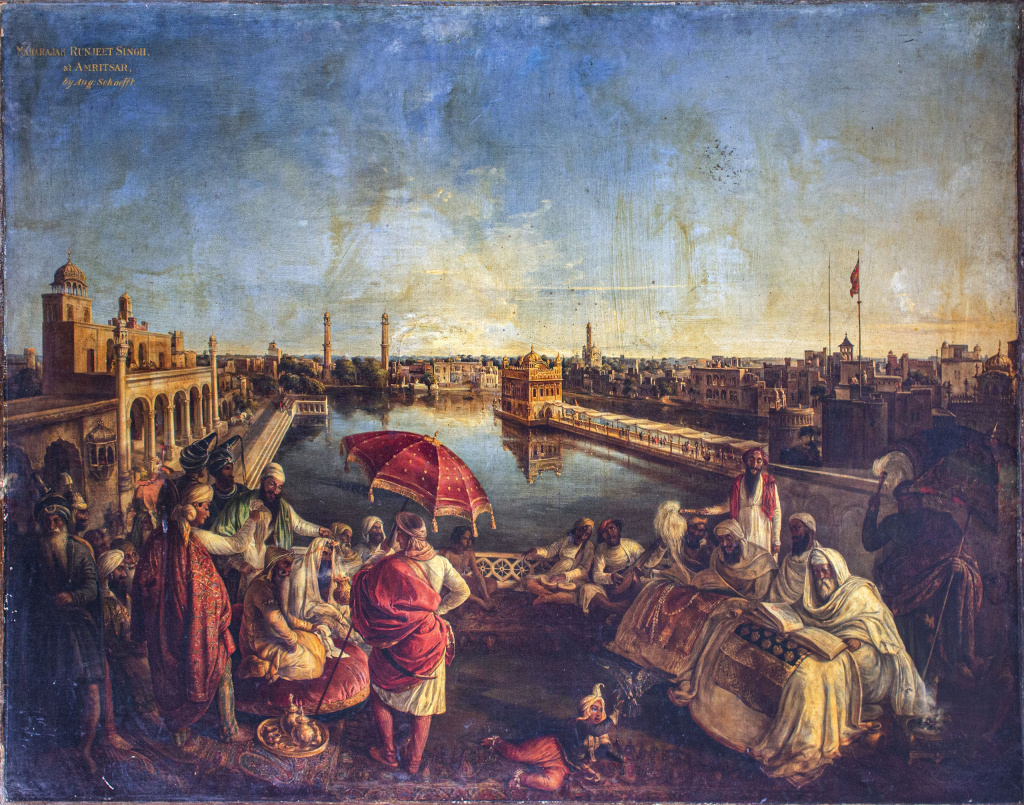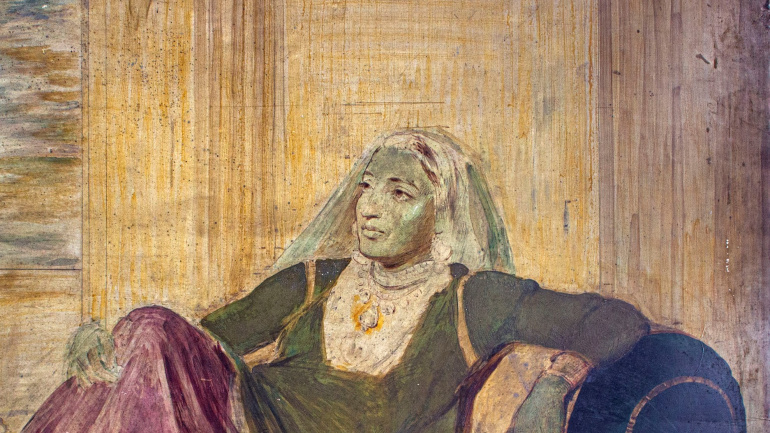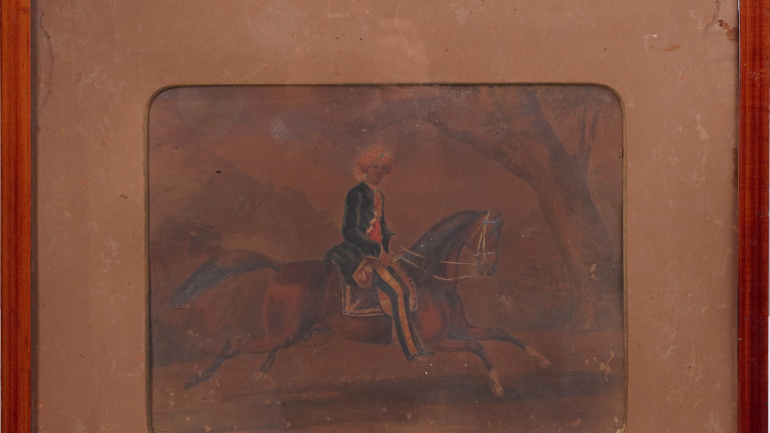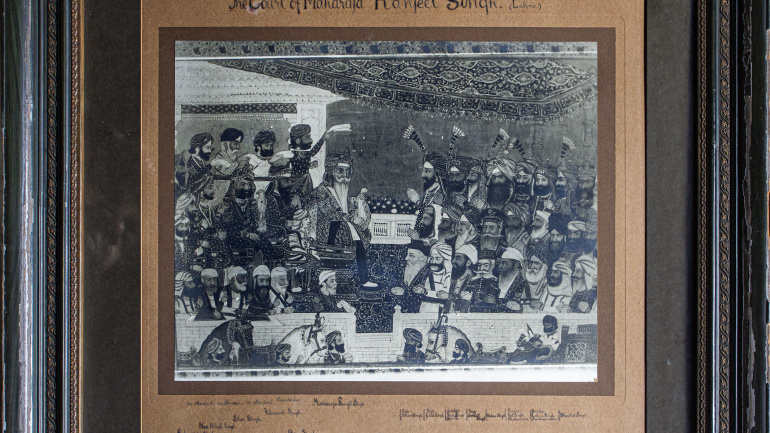- DETAILS
- DESCRIPTION
Title: Maharaja Ranjit Singh at Amritsar
Classification: Oil painting
Artist(s): August Schoefft (1809–1888)
Date: 1841–1855
Dimensions: H. 45 in. x W. 56.5 in.
Museum number: S.M.97 (N.M.1961.377)
Physical location: Section 5: Rani Jindan's Haveli
Collection: Princess Bamba Collection
Inscriptions: In the top left corner of the painting: “MAHARAJA RANJIT SINGH. [next line] at AMRITSAR, [next line] by Aug: Schoefft."
Bibliographic Reference(s):
F. A. Khan, The Princess Bamba Collection Catalogue: Antiquities of Sikh Period (Lahore: Department of Archaeology, 1961), plate II (cat. no. 2).
F. S. Aijazuddin, Sikh Portraits by European Artists (Karachi: OUP, 1979), plate I.
Maharaja Ranjit Singh is depicted attending the recital of the Guru Granth Sahib (the Sikh holy scriptures), seated on the terrace of a bungā (lit. a tower or residence; probably his own apartment in the vicinity) close to the Golden Temple at Amritsar. The presence of two copies of the Guru Granth Sahib may mean that one is the Adi Guru Granth Sahib and the other is the Dasam Guru Granth Sahib. Placed on platforms covered with the finest silks, velvets, gold-woven and embroidered fabrics, each holy book is attended by its own granthī (reader of these scriptures) and a chaurī or flywhisk bearer. The recital is accompanied by music as is apparent from the presence of three musicians. Of these three, two are clearly visible: one plays a stringed instrument and the other beats a pair of small drums in his lap.
The Maharaja sits on a red velvet cushion wearing a yellow silk jāma accompanied by either his son Kharak Singh or an important courtier whose head is covered as a mark of respect for the holy books. The Maharaja has two attendants by his side carrying markers of royalty, the umbrella and the rumāl (handkerchief). The latter is shown here instead of the usual chauri, to mark his humility and reverence for the sacred books as chaurīs are waved over them. Several Akalīs (a class of Sikh warriors dressed in deep blue with quoits on their pointed turbans) along with finely dressed courtiers can be seen behind the Maharaja. An ascetic with a bare torso sits at the far end, while an infant prince (probably Duleep Singh) wearing silver anklets and a tiny sword tied around his waist is attracted by the tassels of the costly fabrics around the sacred books.





